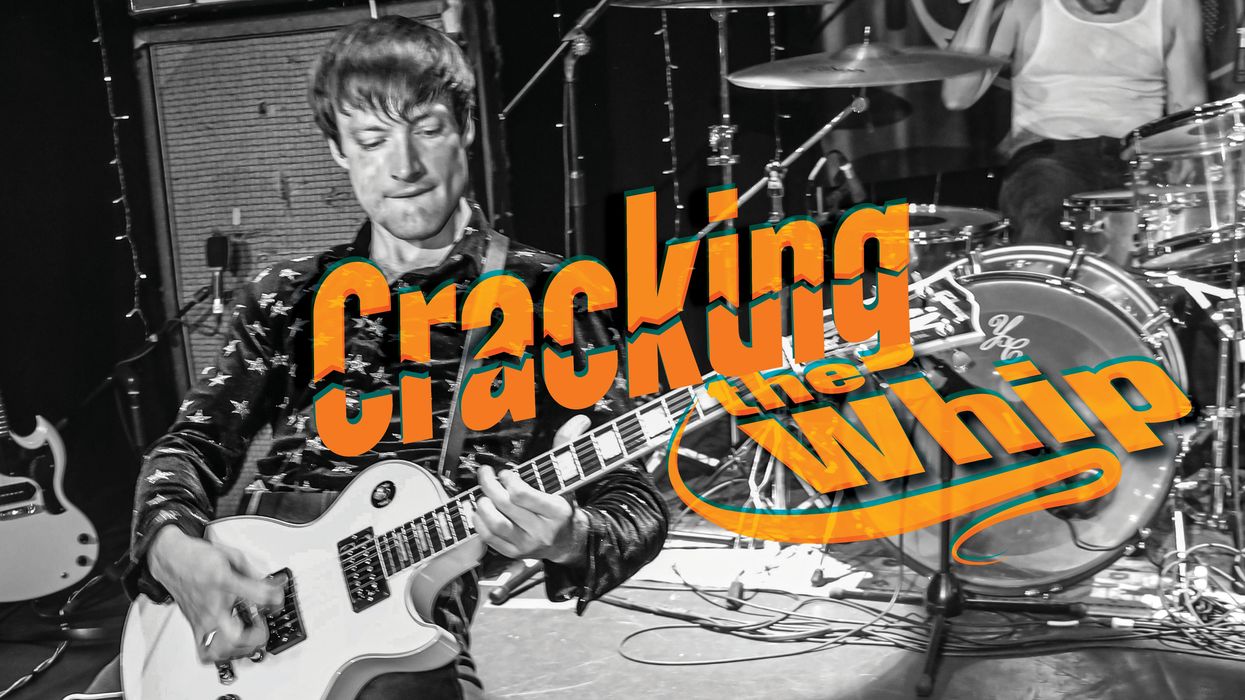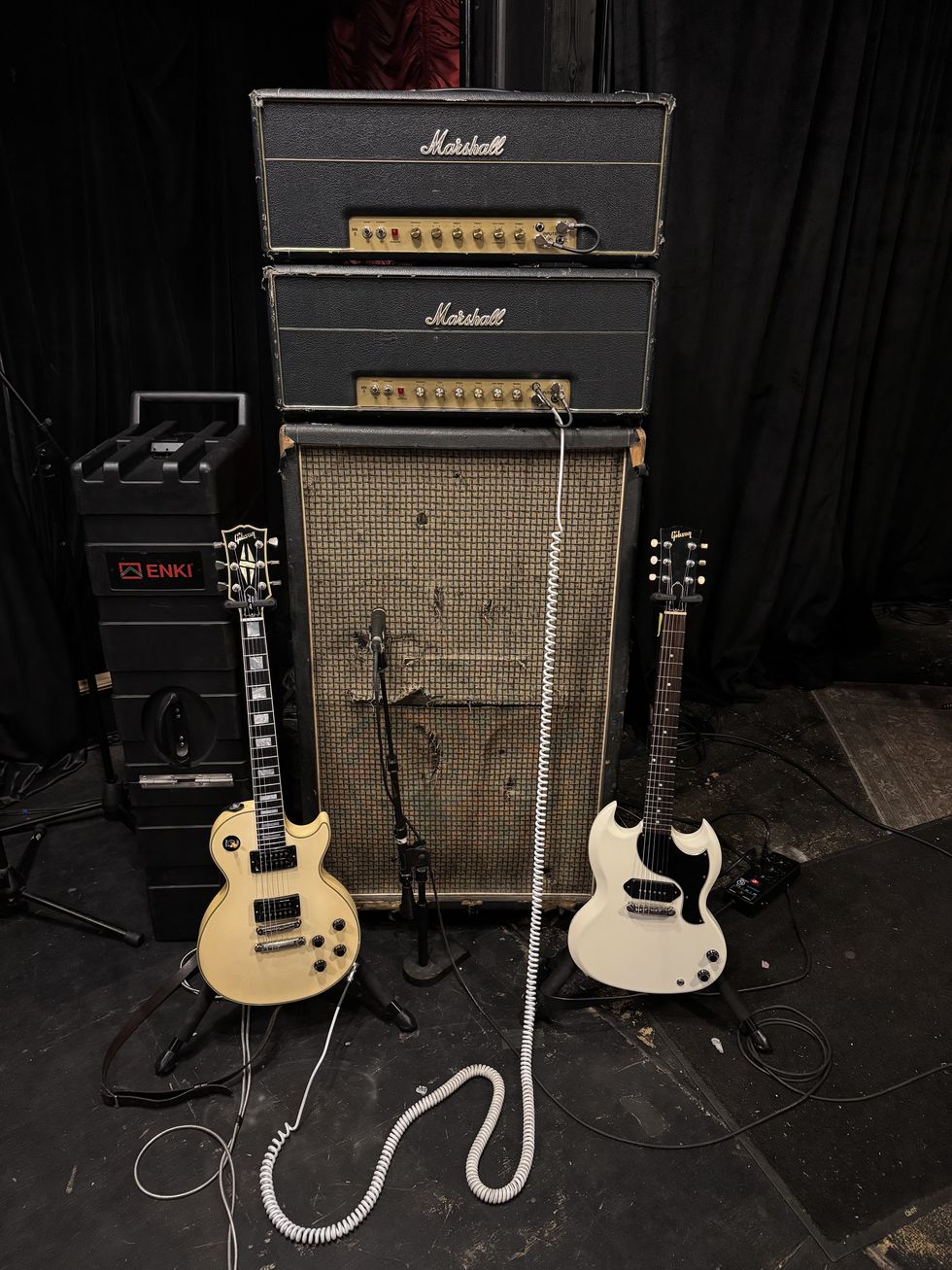Having lived and breathed music nonstop since forming in 1994 as a side project to the Allman Brothers Band, Gov’t Mule is an absolute giant in the jam band scene. Though the Covid lockdown slightly derailed the band’s momentum, it also gave them an opportunity to channel their creative muses in different ways.
“During the whole lockdown I was writing more material than I had written in a very long time, ’cause I had all this time on my hands and we couldn’t travel, and we couldn’t tour,” explains Grammy-winning frontman and guitarist Warren Haynes. By the time the lockdown ended, they had a backlog of many, many new songs. So, when it was time to get back to the studio, they went with a vengeance, simultaneously recording both the newly released Peace…Like A River, and an additional blues record, Heavy Load Blues, which came out in November 2021.
“We had been talking about making a blues record at some point in our career, but there were no immediate plans to do that,” recalls Haynes. “So, the idea was brought up. And my response was, ‘Well that would be a lot of fun, but I have all these new Gov’t Mule songs that I would love to record, so maybe we could do two records at the same time.’ Everybody loved that concept because we were all bored and going crazy not being able to perform. We found a studio with two side-by-side rooms.”
The two rooms offered the perfect setup for this recording strategy. One room was smaller, with a low ceiling where the band set up a bunch of vintage amps and a vintage drum kit to play blues. The room next door was a big room with high ceilings, and there they put all of their normal Gov’t Mule equipment. There was literally no overlap between the two setups. “We did this deliberately,” says guitarist, keyboardist, and trumpeter Danny Louis. “We had the big live room where we would work all day long on the, for lack of a better term, proper Gov’t Mule album. And at the end of the day, we would adjourn to the small area and do some blues tunes with the idea of releasing a Gov’t Mule blues album, which was something that was discussed and in the works for a long time. So, we had different gear, different amps, different keyboards. I didn’t use the same organ even—there was a different B3 [Hammond organ], and a lot more acoustic piano.”
Warren Haynes' Gear
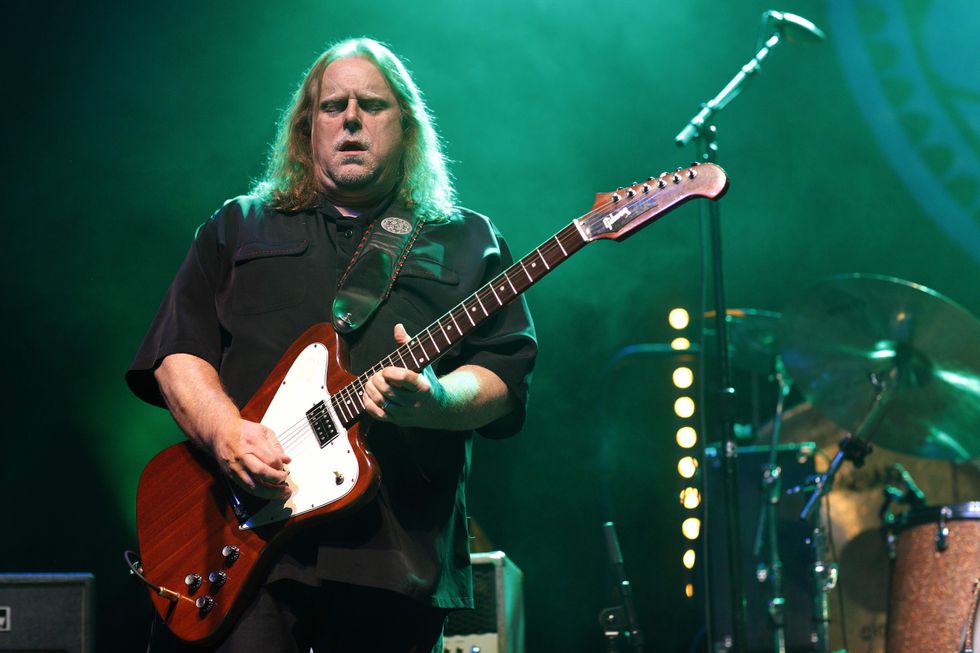
During the pandemic, frontman Warren Haynes led Gov’t Mule through the simultaneous recording of a blues album and a “proper” Gov’t Mule album, Peace…Like A River.
Photo by Ken Settle
Guitars
- Gibson Warren Haynes Les Paul
- 1959 Gibson Les Paul
- Gibson Robby Krieger Signature Les Paul
- Gibson Custom Shop ES-335
- Gibson ES-335 with P-90s
- Gibson Firebird (white with three pickups)
- Gibson Firebird (brown with three pickups)
- Gibson J-200
- Gibson Hummingbird
- Gibson Grace Potter Flying V
- Epiphone Casino
- Allen Woody’s Gibson 12-string acoustic
- Epiphone 12-String Acoustic
- D’Angelico Excel
- Whitfill Custom Guitars T-Style
Amps
- Homestead HS50
- Diaz CD100
- Vox AC30
- Alessandro AZZ
Effects
- Ernie Ball Volume Pedal
- G-Lab Warren Haynes Wowee-Wah
- Chandler DDL Delay
- Korg DTR-1
- Diaz Texas Ranger
- Boss DD-5 Digital Delay
- Hughes & Kettner Rotosphere
- Klon Centaur
- Emma Discumbobulator
- Boss OC-2 Octave
- G-Lab Reverb
- Custom Audio Electronics Super Tremolo
- D’Addario pedal tuner
Strings, Picks, and Cables
- GHS Burnished Nickel Rockers (.010–.046 and .011–.050)
- Dunlop Tortex .88 mm
- Custom painted Dunlop 215 slides
- D’Addario cables
The studio days were extremely packed. The band would go in around noon and start working on Peace…Like A River until around 9 p.m., then take a break and have a bite to eat. Then they would go into the little room next door and play blues for the rest of the night. “We did that every day for a few weeks,” recalls Haynes.
For a “proper” Gov’t Mule album, Peace…Like A River covers a lot of ground, stylistically speaking. “It goes into a lot of different directions but all under the heading of rock ’n’ roll,” says Haynes. There are shades of soul music, and even almost a dub influence on tracks like “The River Only Flows One Way.” “Just Across The River” has a gospel vibe driven by guest vocalist Celisse Henderson, aka “Celisse.” “I envisioned it having a female singer counter to my voice, and she sounds fantastic,” says Haynes. “I’ve only recently become familiar with her over the last couple of years. I watched some videos and became a fan, and thought it would be cool to have her on the record. And then we wound up on this show together and we hung out, and it kind of led to this whole thing.”
“Usually when I write a song, I’m not even thinking about whether it’s a Gov’t Mule song or an Allman Brothers song, or a song for a solo record, or a song for someone else.”—Warren Haynes
On this new album, Gov’t Mule continues their long-standing tradition of bringing in guests to lend their musicianship. The star-studded lineup includes Billy Bob Thornton and ZZ Top’s Billy Gibbons, who appears on “Shake Our Way Out.” Haynes says, “Gibbons’ appearance brought it home. That song is definitely ZZ Top-influenced and that’s the reason I reached out to Billy. Gov’t Mule started out as a trio and obviously ZZ Top was one of our influences. We even covered ‘Just Got Paid’ in the beginning. We recorded it on what would have been our first record, which didn’t come out ’til much later, called The Tel-Star Sessions. So, we’ve always been fans and we’ve toured together, and Billy and I have played together quite often, so it was just kind of a natural thing.”
Many Gov’t Mule songs seem tailor-made for the guests that appear on the album versions, but, surprisingly, the songs usually don’t begin with them in mind. “Each situation is different, but normally it happens later. Usually when I write a song, I’m not even thinking about whether it’s a Gov’t Mule song or an Allman Brothers song, or a song for a solo record, or a song for someone else. I don’t think about that until the song is finished, for the most part,” explains Haynes. “And some songs can be interpreted a lot of different ways and some not as much, but it’s usually after the fact that I think, ‘Oh, so-and-so would sound great on this.’
While Haynes is the face of Gov’t Mule, Danny Louis has been an integral part of the band since the early days. Louis’ main instrument was originally trumpet, which he played as a pre-record-deal member of the Cars, as a member of pop band UB40, and in Joe Cocker’s band. But in 1989, he was afflicted with Bell’s palsy, which led to a change in instrument to keyboards. Through mutual friends, Louis met Haynes in 1992 and ended up playing keyboards on tour for Haynes’ debut solo album, Tales of Ordinary Madness. Louis sat in with Gov’t Mule throughout the years, and in 2001 he joined Gregg Allman’s band, playing keyboards. Soon after, Louis officially joined Gov’t Mule.
Danny Louis' Gear
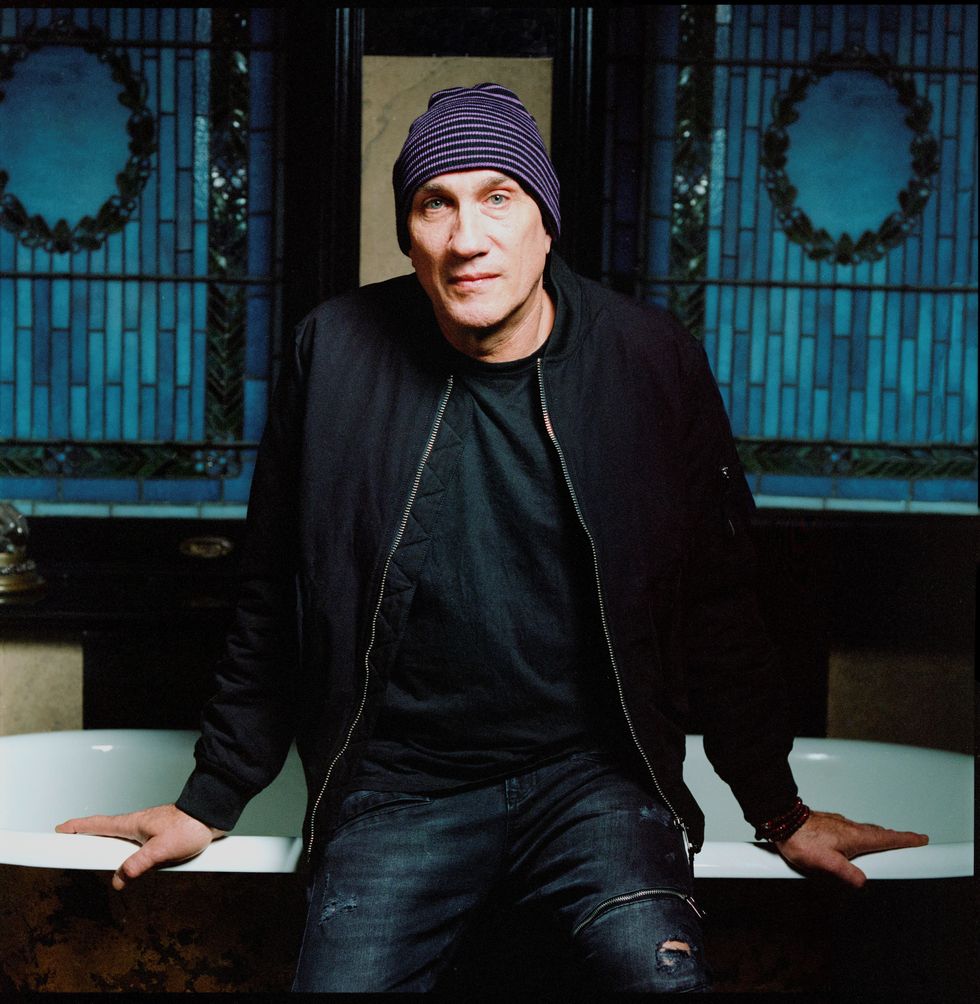
Guitars
- Gibson SG Special
- Fender Stratocaster
- Fender American Original Telecaster
- Buddy Blaze Evanator Jr.
- John Ingram Seneca (one-off prototype)
Amps
- Two Fender Twin ’65 reissues
- Category 5 JB100
- Marshall 1960B 4x12
Effects
- Line 6 M13 Stompbox Modeler (for the Wurlitzer)
- Assorted Line 6 DL4s, MM4s, and FM4s (for various keyboards)
- Line 6 ToneCore Verbzilla reverb pedal (for B3 run through guitar amp)
- Vox Wah for clavinet)
- Dunlop HT-1 Heil Talk Box (for clavinet)
Strings and Picks
- D’Addario NYXL1052 (.010–.052)
- PickWorld medium celluloid white pearloid
“[Warren] called me and asked if there was some place he could come see me,” Louis shares, recalling his first meeting with Haynes. “In those days, and for a long time, my gig was more as a composer, as opposed to being a player. I always had a studio and I was always doing writing for a living, so my playing would be in service of that. So, he asked if he could come by and see me play at some gig, and I said, ‘The best thing to do is come over to the studio.’” Within minutes he had come over, and both Haynes and Louis were soon cracking up because it was otherworldly how well they clicked.
The collaborative process between the two depends on the composition and how well-developed it is. “If it’s something that Warren comes in with that’s up there in his head, I feel like my job, before I start to inject my own two cents, is to help bring that to life. And he’ll tell me, ‘I think you should play this,’ and I never take that like he’s being a dictator,” explains Louis. “I just take it as embracing what’s going on in his head, and at that point, once I’ve kind of got that, I don’t feel shy about saying, ‘Well how about this?’ Or ‘How about that?’ if it occurs to me and if I think it will enhance what we’re doing. And I think he’s hoping that I will. I don’t think it’s written in stone in his head, either.
“In our case, well, in my particular case, if I play a particular song in one city, I suppose I should play it differently in the next city when we do it.”—Danny Louis
“But sometimes it’s a real picture that’s already painted in his head, and I’m gonna help just make that happen because I’m digging it too,” Louis continues. “The caveat in that is that I have limited capabilities on guitar and whatever I do bring to the table, it’s different than what Warren would ever bring to the table—whether it’s because I’m sloppy or because I have a different instrument tone, or because I can’t play the kind of stuff that he can play. But then I’ll figure out something that he might never figure out, by virtue of my limitations. Over the years, we’ve learned to trust that and turn me up, and it’s a tremendous, tremendous joy for me.”
The trust given to Louis opened the doors to him even getting some guitar features on Gov’t Mule recordings. Louis says, “It’s encouraged me to take it as far as I can take it using my role in the band. It’s primarily rhythm guitar but I’ve also played a solo or two that actually stayed on the records. In ‘Funny Little Tragedy,’ which was off the Shout album, we were taking the basics and Warren was playing the baritone guitar and I was playing rhythm. We were looking at each other through glass—I remember I was in a separate room—and when the solo section came up, I figured the two of us were just going to play rhythm and then he would overdub the solo later. And he gave me this look and I was like, ‘Really?’ [laughs], as it was coming up, so I blew a solo and it happened to take, and we kept it. There’s a happy accident factor that you could only legislate by being totally unprepared [laughs]. So, I probably specialize in that.”
The live experience is the heart and soul of Gov’t Mule. In fact, Gov’t Mule has archived every single show since 2004 and sells them online. “There’s a large part of our audience that prefers the live versions, and the whole jam band scene is kind of centered around that. There’s a lot of music fans that prefer listening to live recordings and, even more so, prefer listening to live music, live performances,” says Haynes. “We allow people to record the shows, to bring their microphones and their recording gear, and we have a special section set up for people that want to record. They trade the shows, trade the recordings…. We’ve been doing that since the inception of Gov’t Mule in 1994. The thought being that it’s kind of a no-lose situation; those people would prefer hearing, in some cases, their own recordings to your studio records or even maybe your live records, because it’s part of their life; it’s what they do. It’s not like a bootleg situation where you’re worried that it’s going to cut into your record sales. It only enhances the overall picture.”
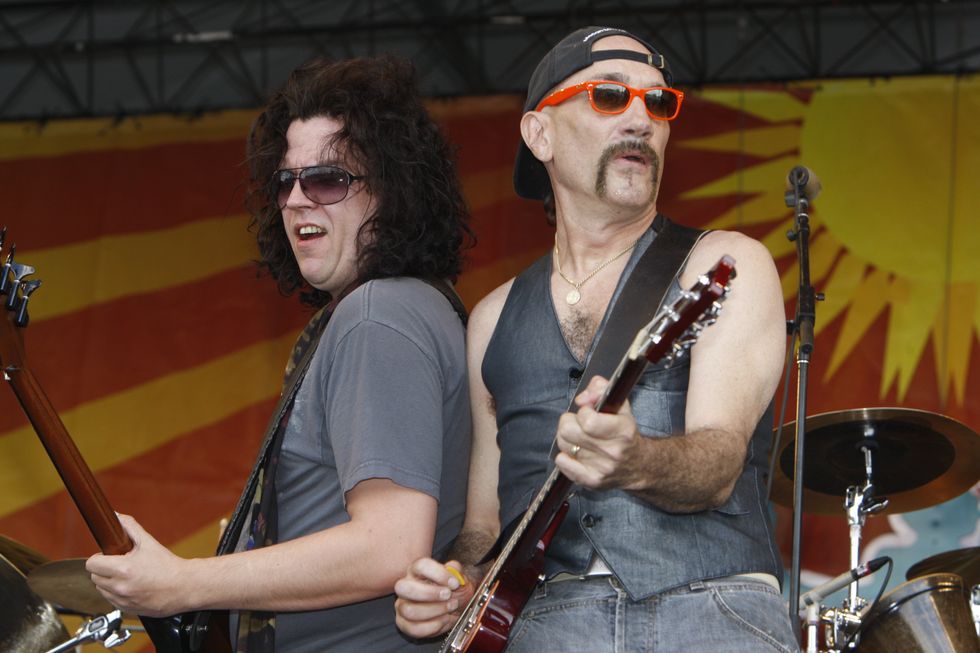
Louis, pictured here to the right of bassist Jorgen Carlsson, says he was more of a composer than a player before he started collaborating with Haynes.
Photo by Joseph A. Rosen
Louis adds, “I kind of take that as a little bit of a challenge, because we try not to repeat in consecutive gigs and do the same show because a lot of folks come to multiple shows, especially if they’re from cities that are close together. The Grateful Dead was probably at the forefront of trying to be creative with their setlist and did things differently from city to city. In our case, well, in my particular case, if I play a particular song in one city, I suppose I should play it differently in the next city when we do it. But I can do that sometimes by simply switching instruments, which is really cool for me. It’s lovely to be able to approach a song differently. So, the download that we offer has something different in it, and I think everybody in the band probably does that.”Mule songs are elastic and malleable. The recorded versions serve as a foundation and the live shows are the context where these songs organically evolve. “I think that this is my favorite studio album that we’ve ever done and I’m very proud of the way it turned out,” says Haynes. “Having said that, these songs will grow onstage and we’ll take them into different directions and different places on a nightly basis. Especially a year from now, it will be interesting to see where some of them have gone. You know, I’m more comfortable on stage playing live in front of an audience than I am in the studio, but I do love making studio records. It’s just a bit more of a thought process and more challenging when you’re performing live. On a good night, you’re not thinking. You’re just riding the wave.”
Warren Haynes & Gov't Mule honor Jerry Garcia 8/9/2022 Portland, ME
There’s a whole lotta Warren Haynes’ guitar in this tribute to Jerry Garcia, onstage in Portland, Maine, last August, which segues into Howlin’ Wolf’s “Smokestack Lightnin’.” This song selection is typical of a night with the Mule, who have a vast repertoire of classics, from Hendrix to Son House to Pink Floyd.
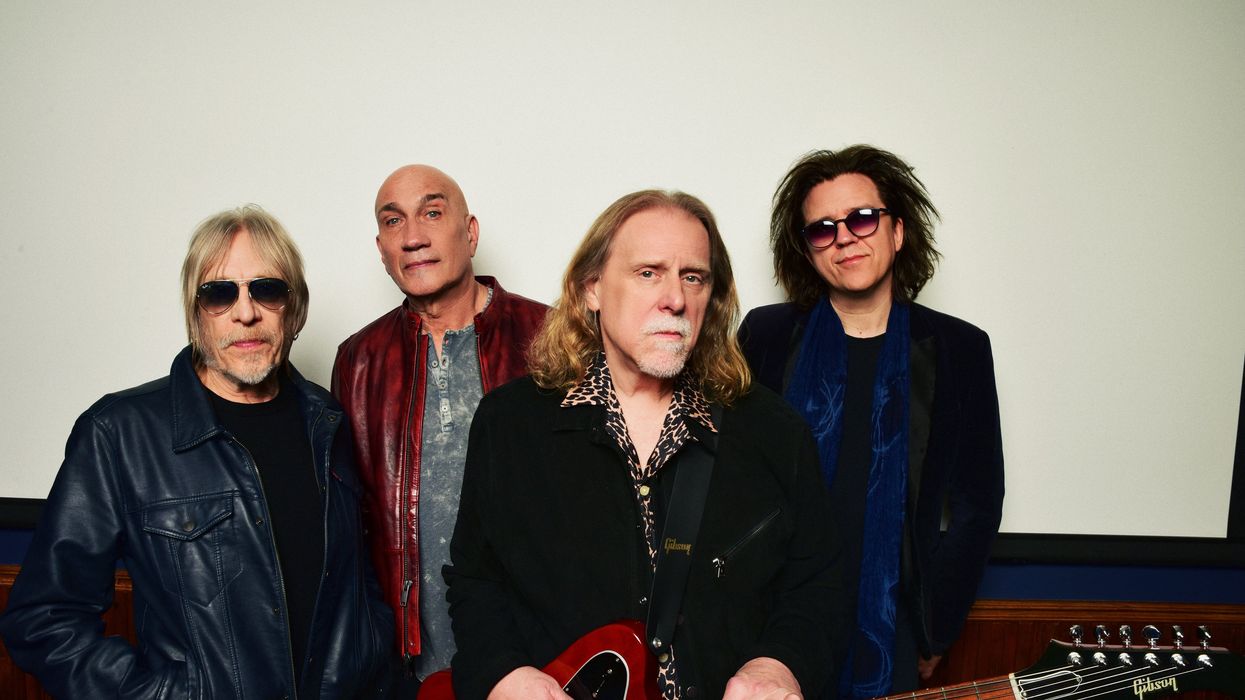

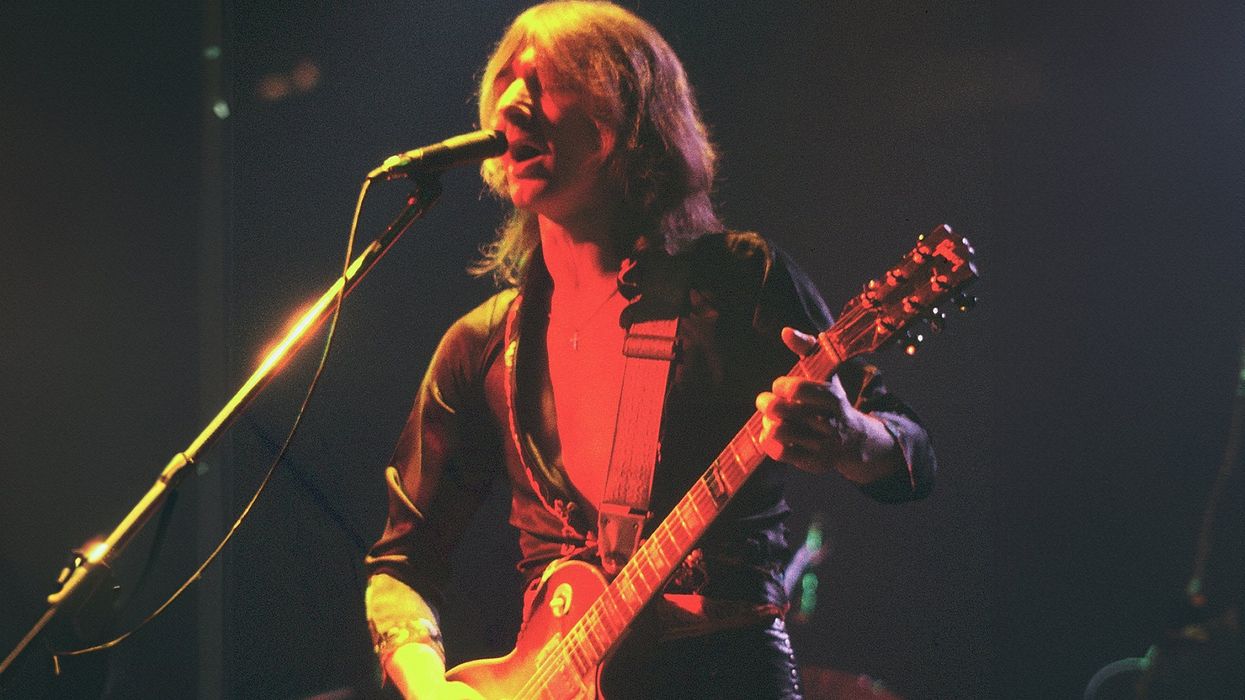
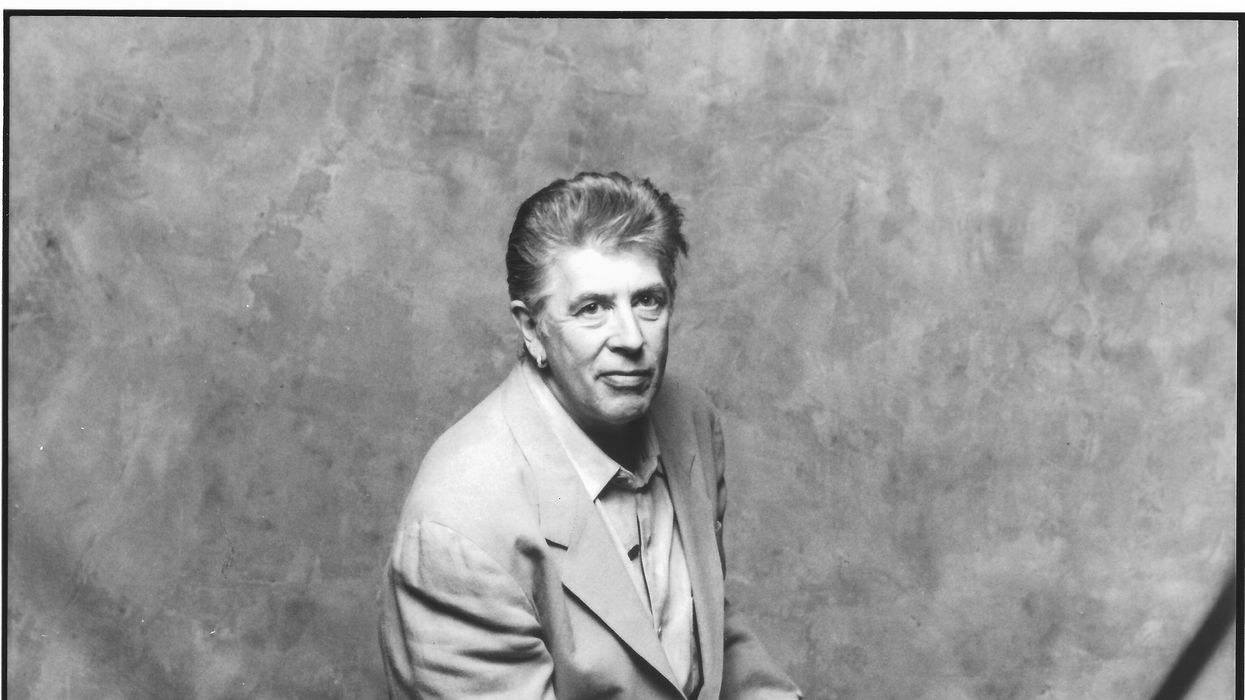

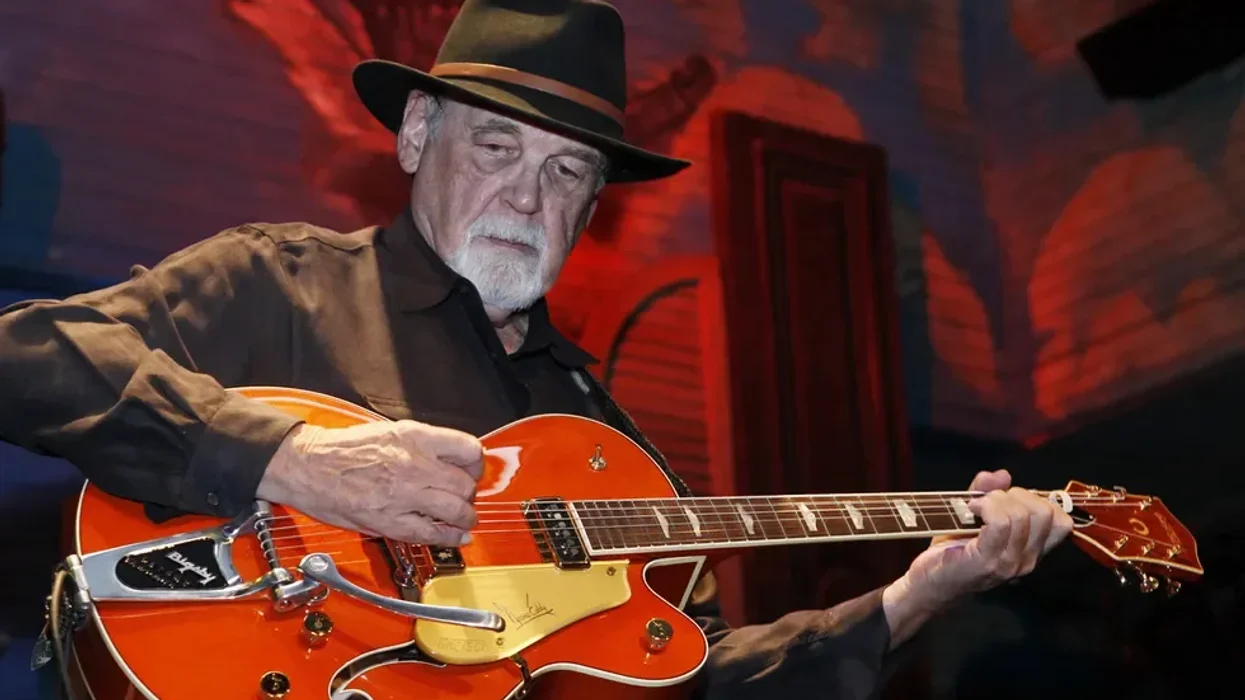
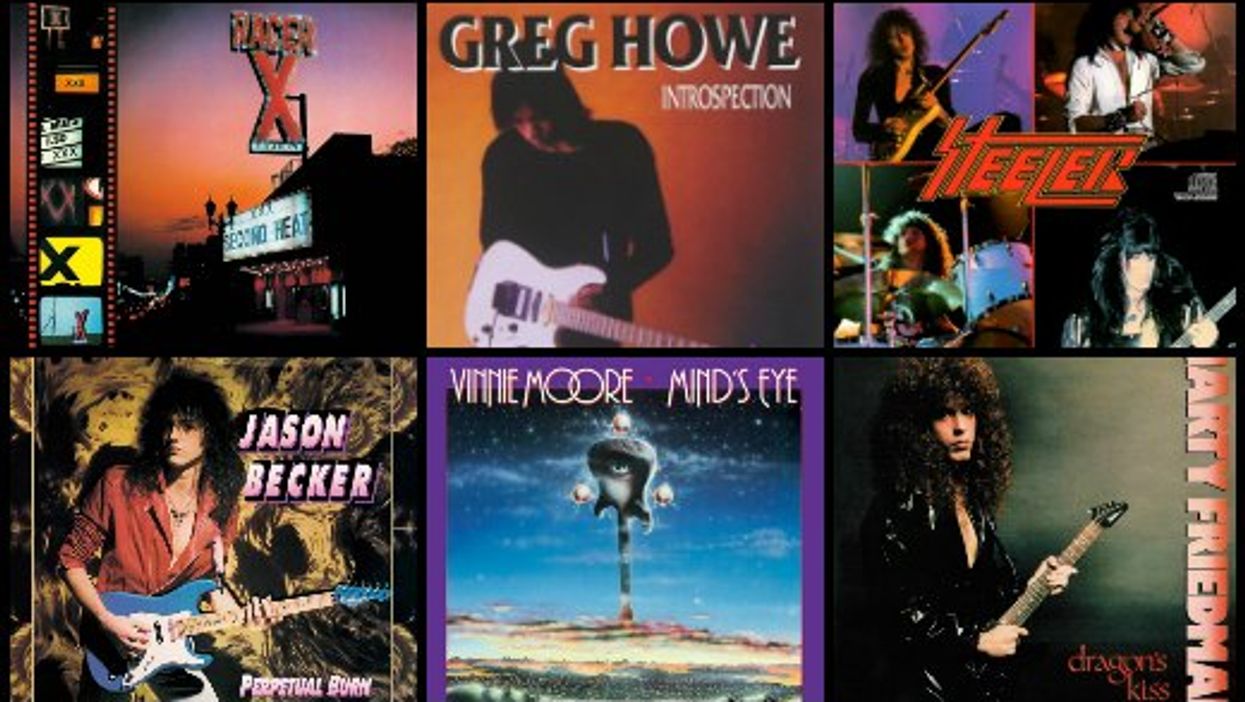
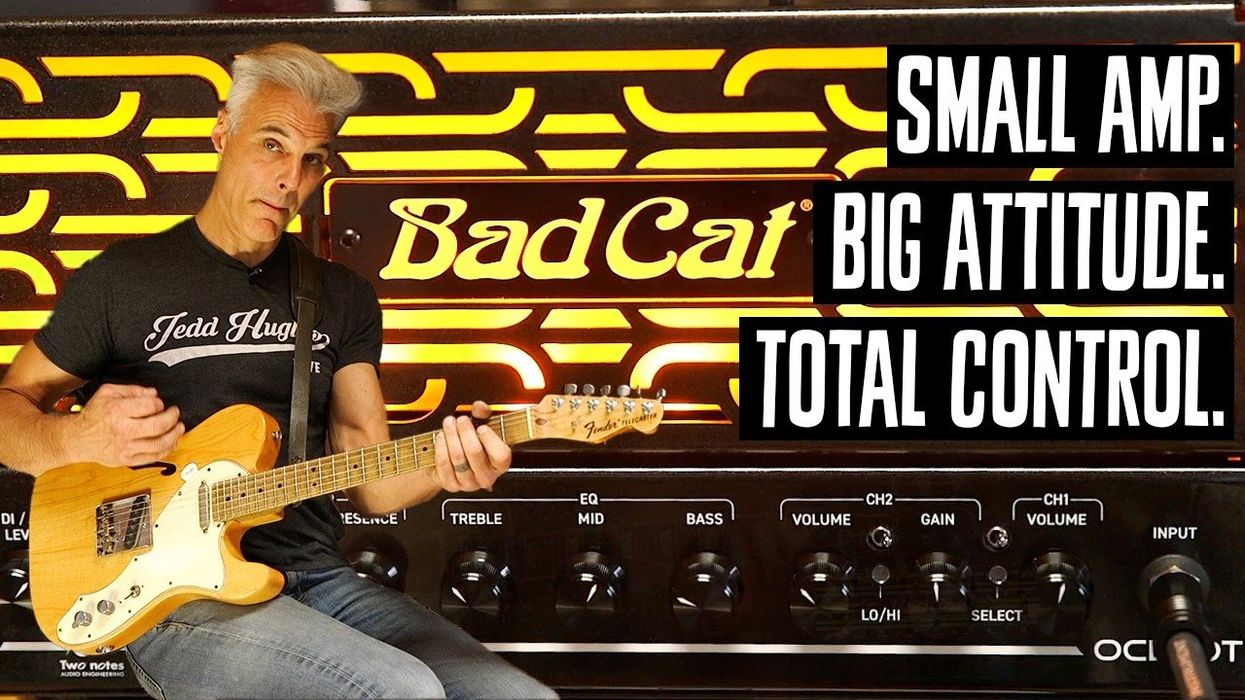
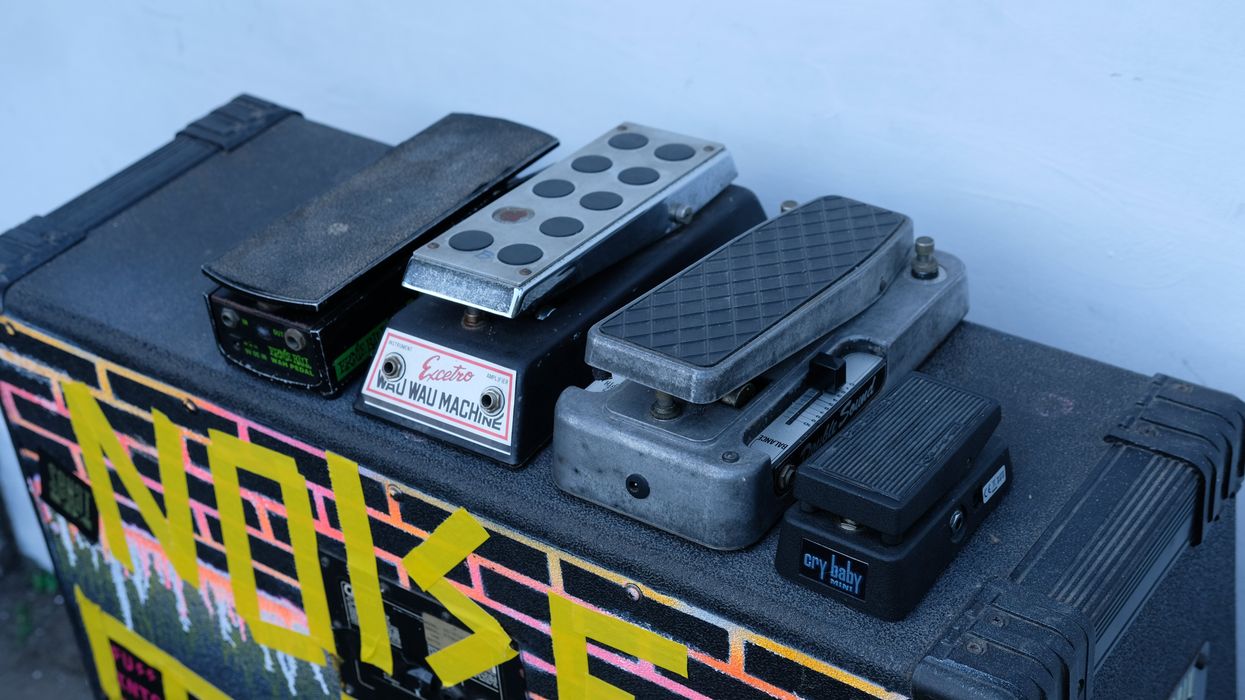
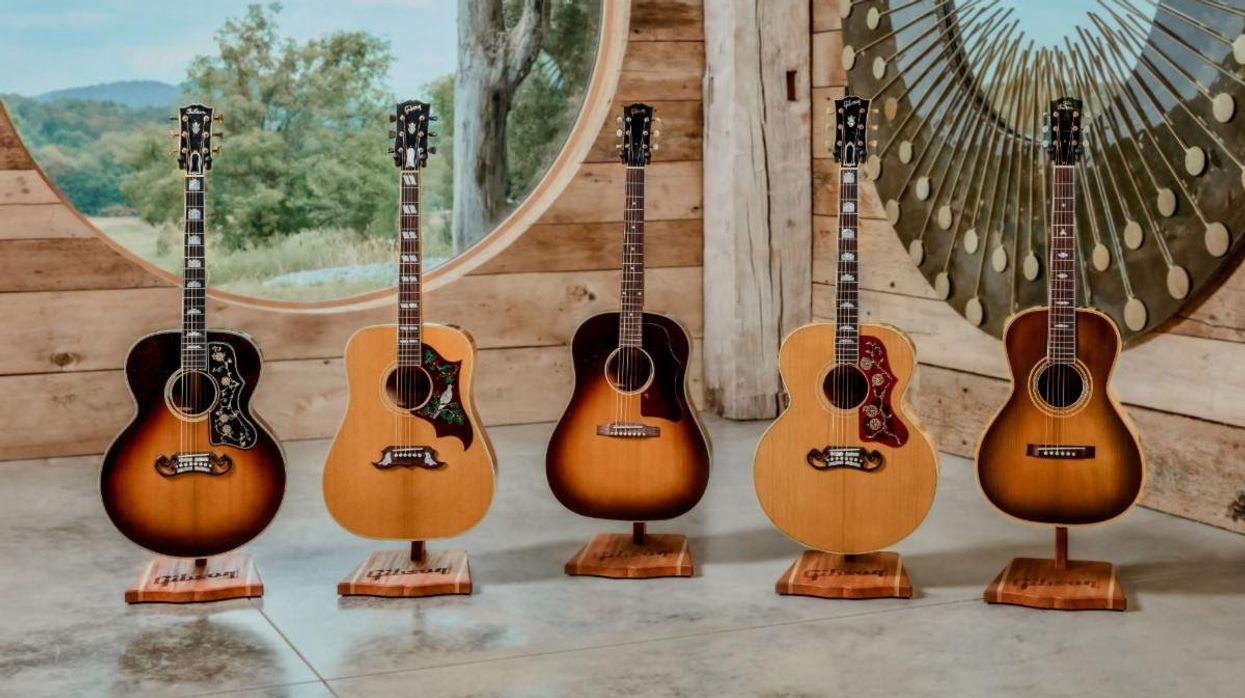

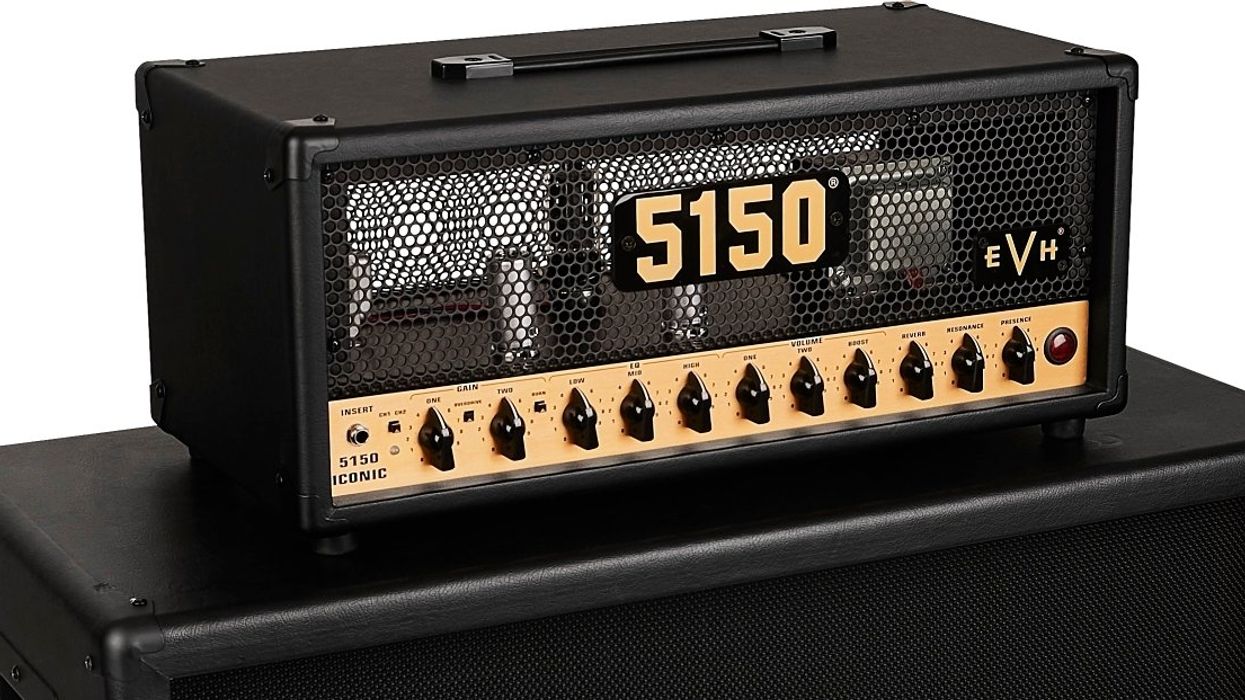

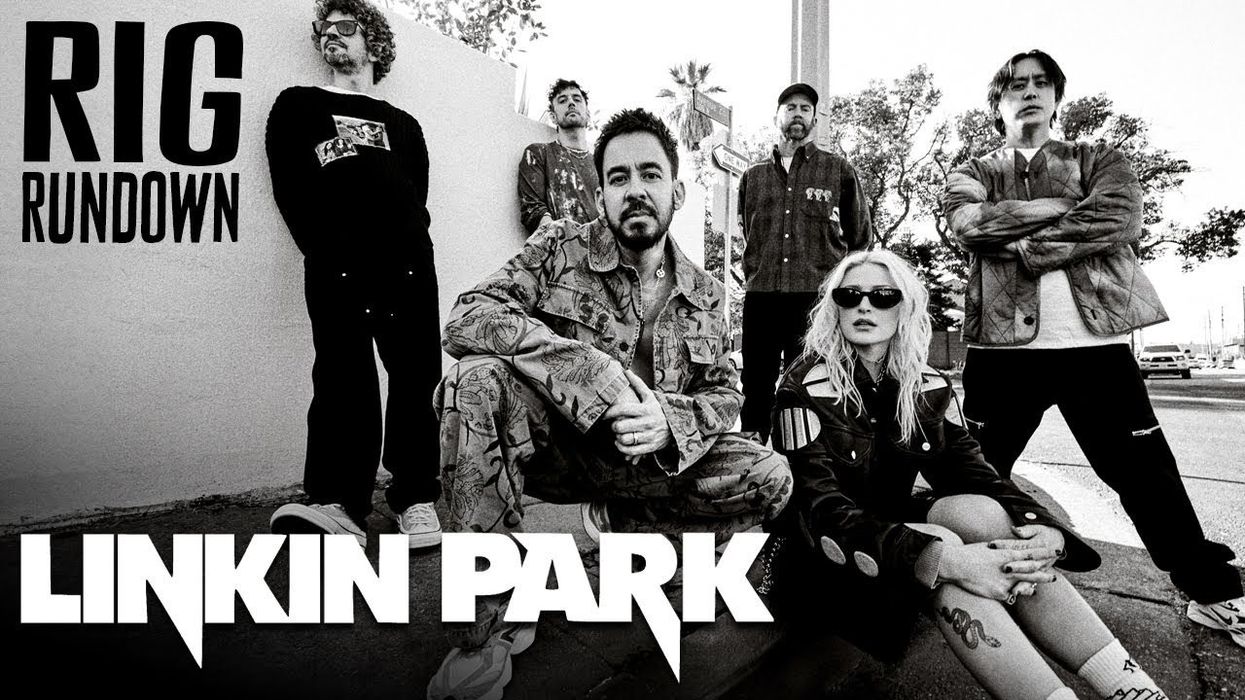
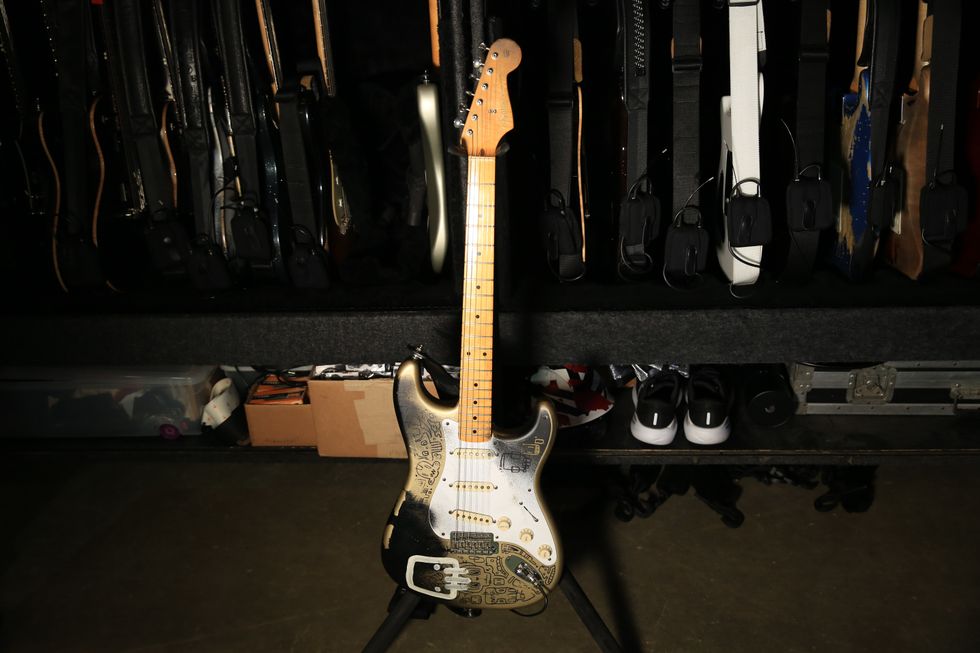
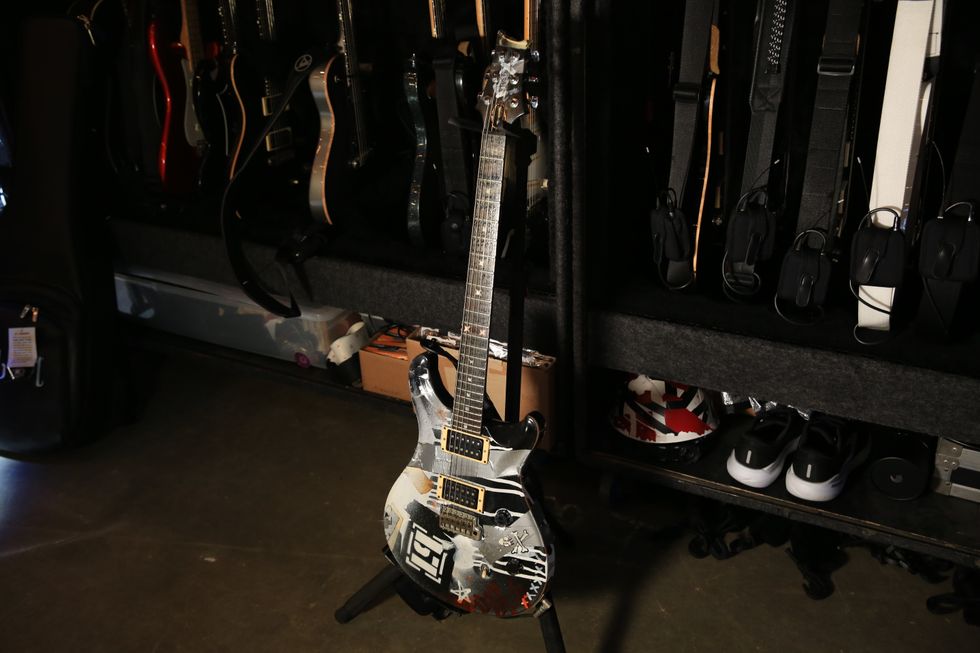
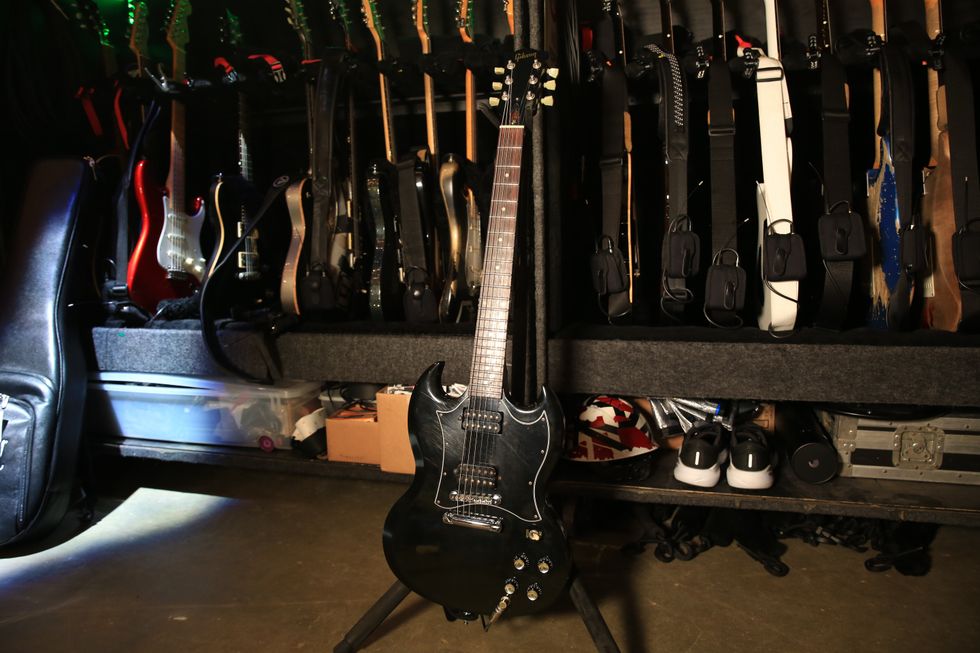

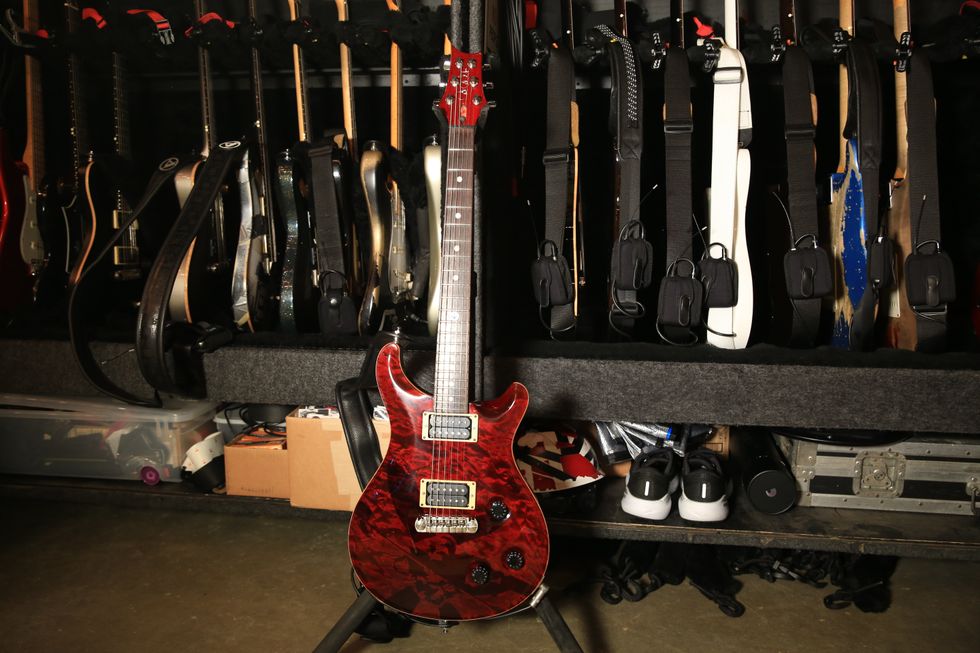
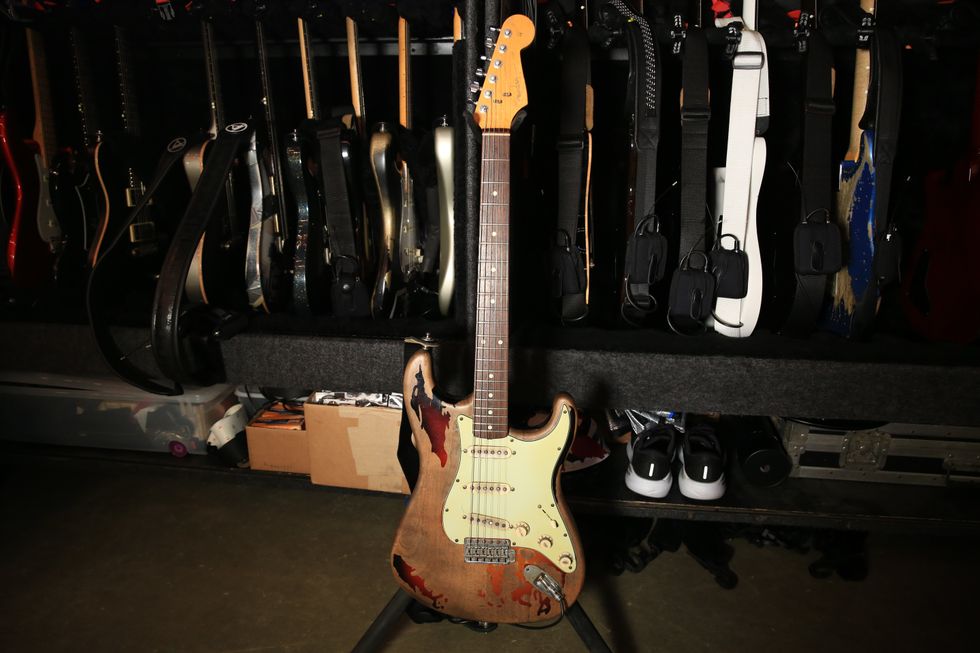



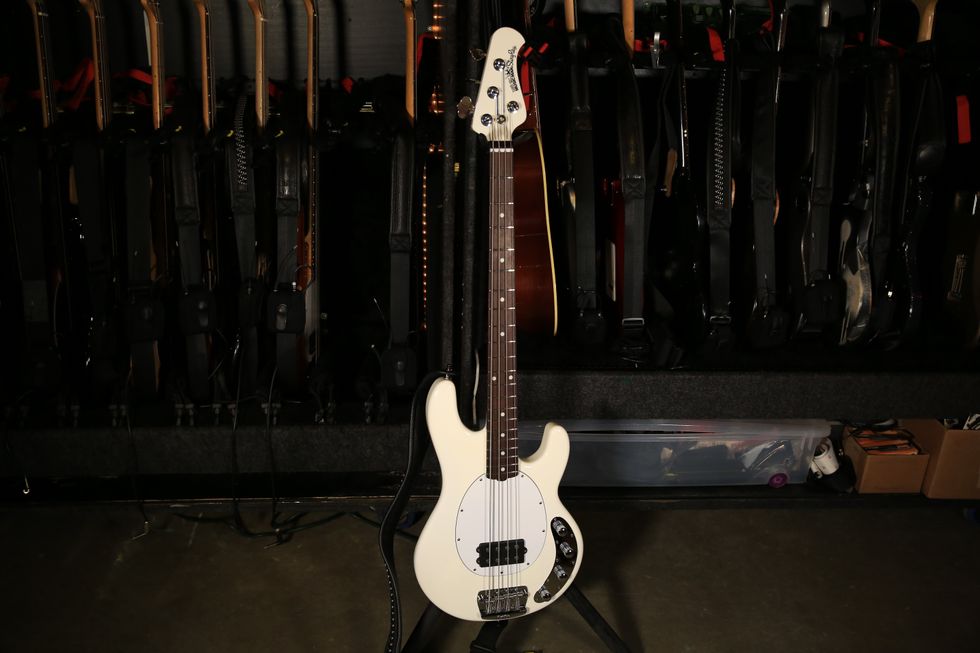
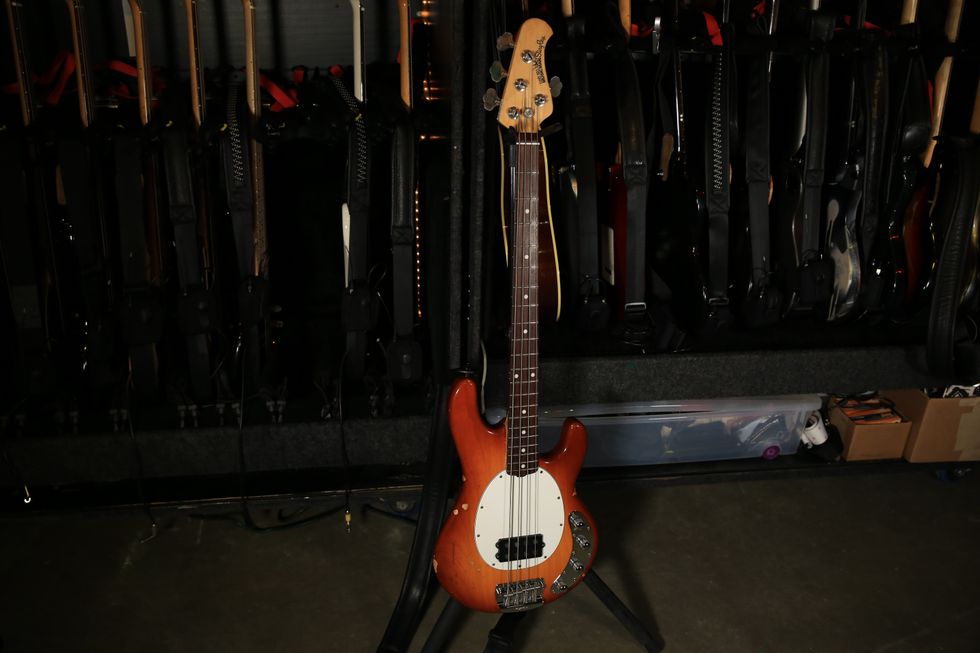
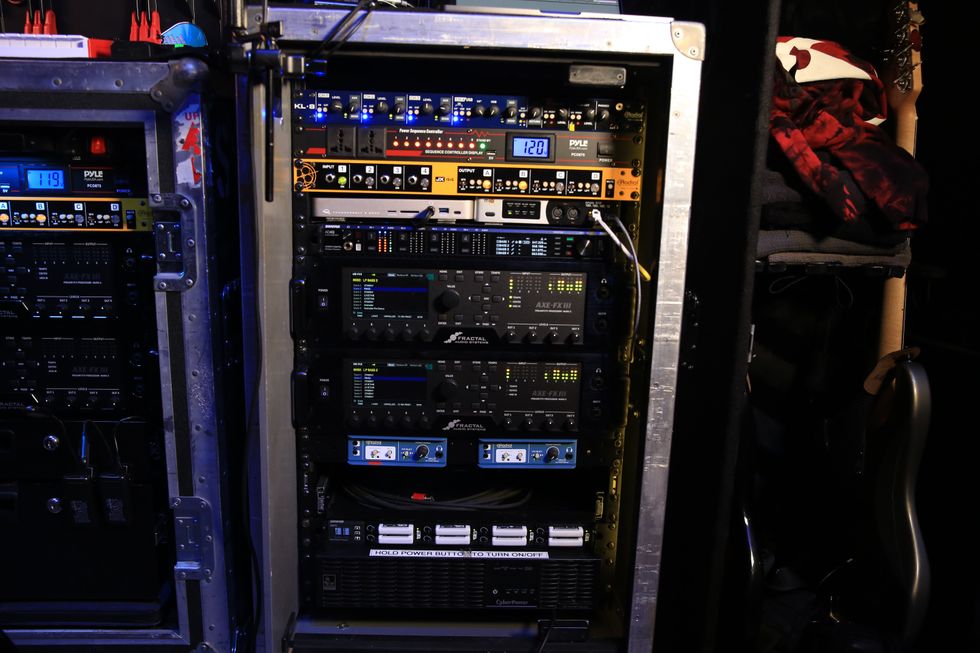


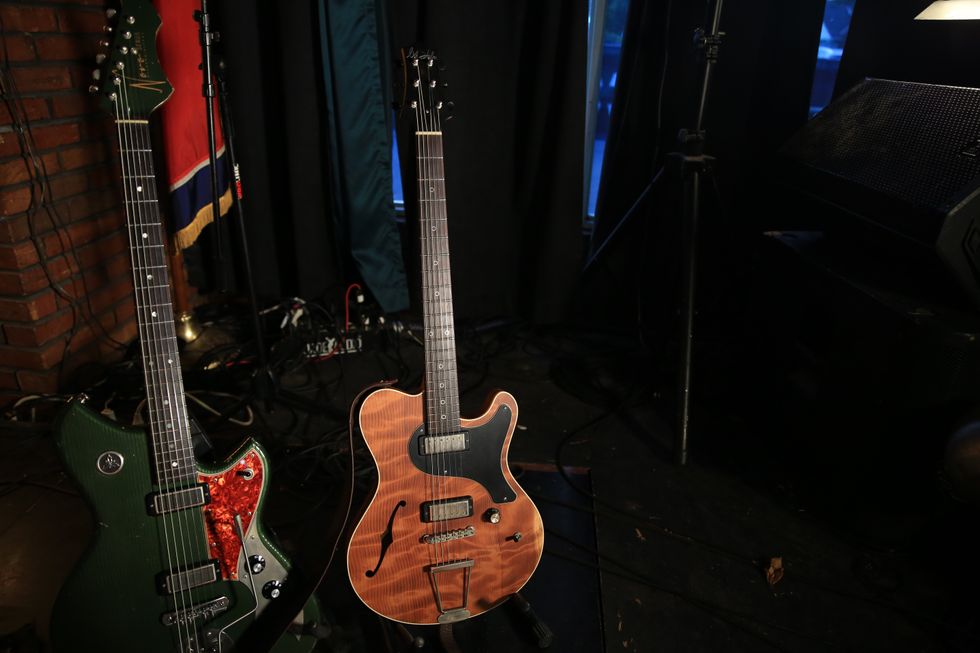
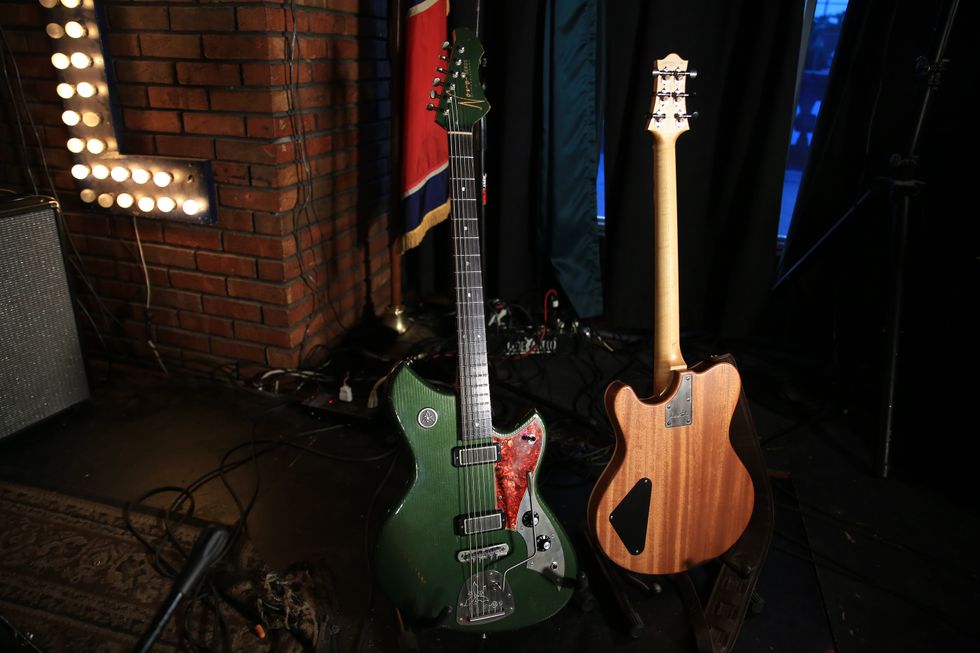
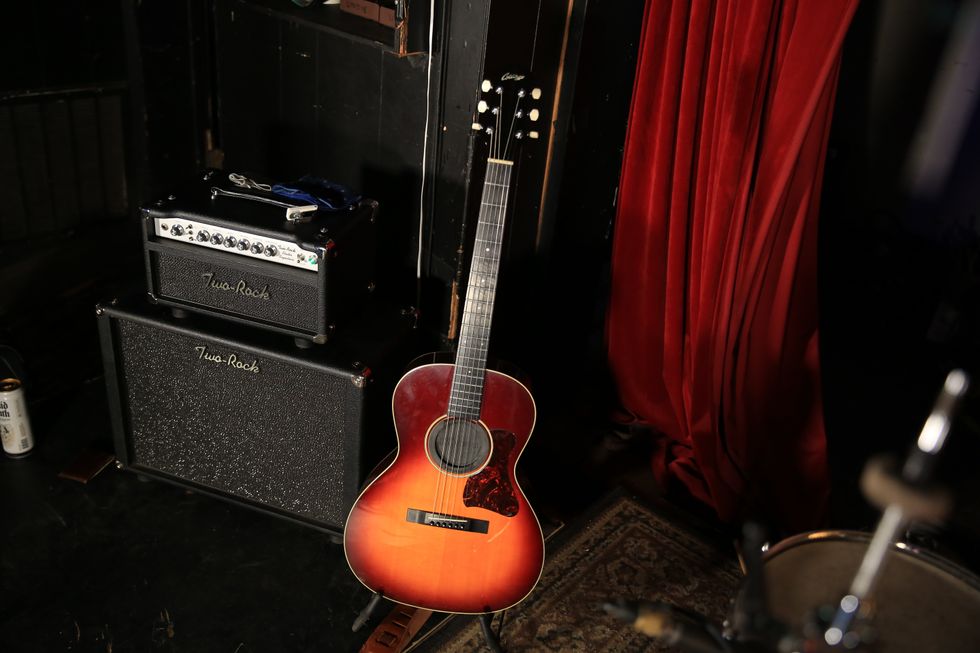
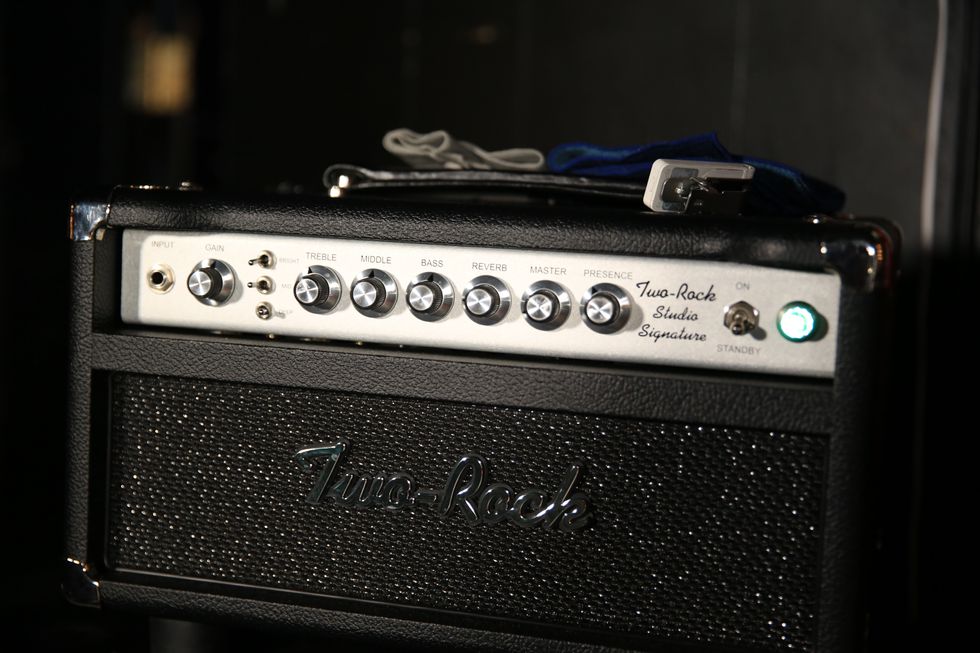
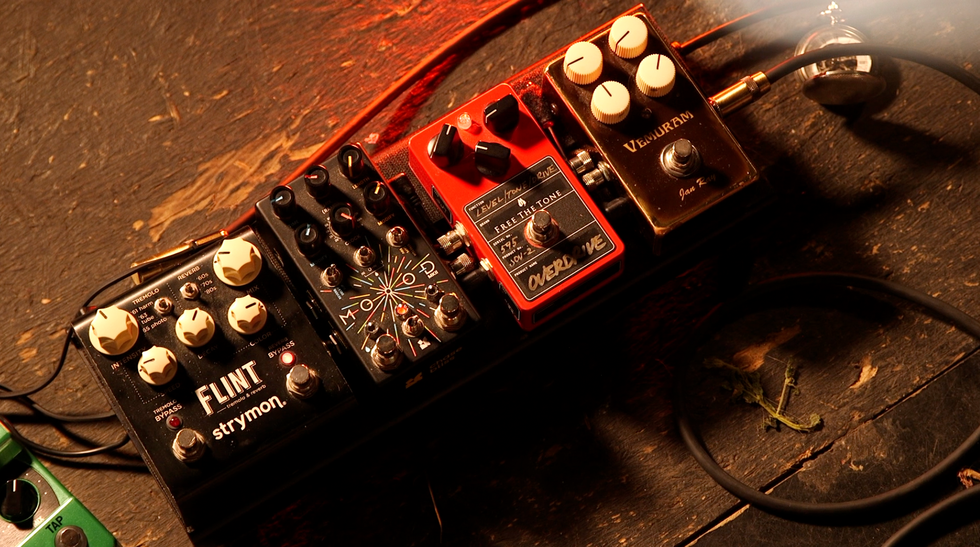
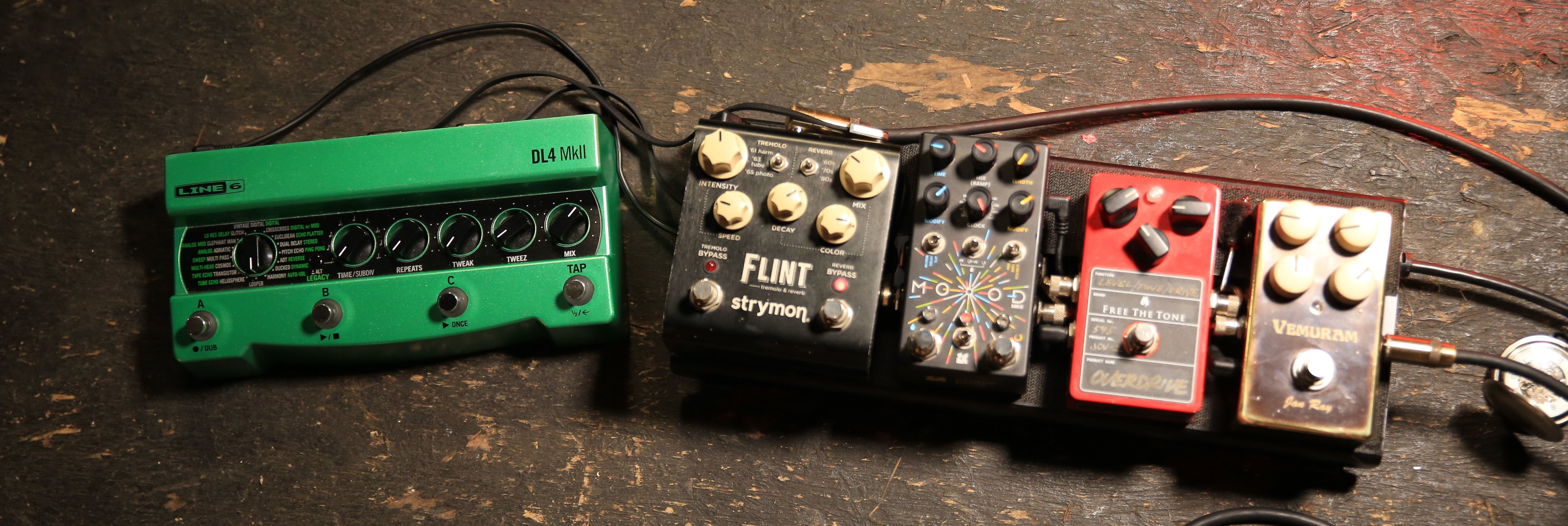 Miller’s Collings runs into a Grace Design ALiX preamp, which helps him fine-tune his EQ and level out pickups with varying output when he switches instruments. For reverb, sometimes he’ll tap the
Miller’s Collings runs into a Grace Design ALiX preamp, which helps him fine-tune his EQ and level out pickups with varying output when he switches instruments. For reverb, sometimes he’ll tap the 
